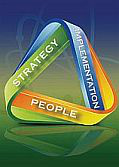Speaker
Zsolt Varga
(European Commission JRC Institute for Transuranium Elements)
Description
Several parameters of the nuclear materials can be used to verify their sources and the declared origin for safeguards purposes, such as chemical composition, nuclear material content, impurities or the isotopic compositions of major or trace-level constituents. Combining these parameters (also known as signatures) enables the verification of the safeguarded materials at high confidence, and also allows detecting the use of undeclared nuclear materials. Moreover, several signatures can be used not only as a comparative indicator against another samples or datasets, but also permits to reveal the possible origin of the undeclared feed material without any prior knowledge on the provenance. The measurable signatures, however, have different strength and require diverse analytical techniques, thus the knowledge of their variations throughout the complex production processes is of vital importance to use them for safeguards.
The aim of the present study is to investigate the behaviour and relevance of as many signatures for safeguards as possible in a respective uranium ore concentrate production process. Within the framework of the European Commission Support Programme A 1753 the production of uranium ore concentrate from uranium ore was followed and sampled at each stage. By the comprehensive analysis of the samples (major and minor constituents, molecular structure, morphology, rare-earth elemental pattern, trace-level organic residues, age measurement, isotopic study of S, Pb, Sr, Nd and Th), together with the process information, the role and applicability of the various signatures can be assessed. By this means the appropriate and relevant safeguards parameters can be identified, their advantages and limitations can be revealed.
| Country or International Organization | European Commission JRC Institute for Transuranium Elements |
|---|
Author
Zsolt Varga
(European Commission JRC Institute for Transuranium Elements)
Co-authors
Doris Ho
(Institute for Transuranium Elements)
Judit Krajko
(European Commission - JRC - Institute for Transuranium Elements)
Klaus Mayer
(European Commission - Joint Research Centre, Institute for Transuranium Elements)
Maria Wallenius
(European Commission, Joint Research Centre, Institute for Transuranium Elements)

